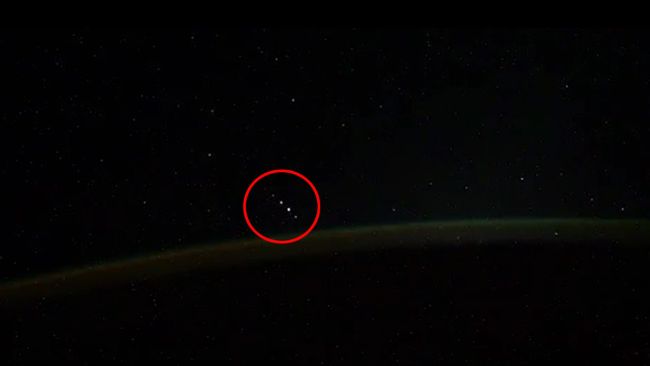
The 'Space Guests' In That Russian Cosmonaut's Video Ain't Aliens...
Share
When Ivan Vagner uploaded a truly transcendent view of the aurora Australis above Antarctica, he didn't expect what came next. A wave of attention from his video, complete with mildly soothing massage music, and the hotly contested debate thereafter.
Auroras typically appear between 112-200 km high; the ISS at the time was 428 km up so the crew looked down to view the lights.
Amazing, but not the reason why the video was a viral greatest hit this month...
While he's no stranger to sharing many a video of Earth from space, he might be a bit new to how sensationalised the people who occupy the internet can be.
There appear to be objects flying at the 9-second mark of the tweet he dropped and Vagner made sure to make mention of it.
Even going to far as to call them 'space guests'.
Check it out here.
Space guests, or how I filmed the new time-lapse.
— Ivan Vagner (@ivan_mks63) August 19, 2020
The peak of aurora borealis when passing over the Antarctic in Australia’s longitude, meaning in between them. However, in the video, you will see something else, not only the aurora. pic.twitter.com/Hdiej7IbLU
"In the video, you will see something else, not only the aurora,"
"5 objects appear flying alongside with the same distance. What do you think those are? Meteors, satellites or ...?"
Vagner informed Russian Space Agency Roscosmos of the anomaly and they shared his enthusiasm for the mystery tweeting:
"An interesting and at the same time mysterious video made by the cosmonaut of Roscosmos Ivan Vagner from the International Space Station."
Russian media outlet TASS confirmed that Roscosmos is investigating the event and Roscosmos spokesperson Vladimir Ustimenko mentioned
"It is too early to make conclusions until our Roscosmos researchers and scientists at the Space Research Institute of the Russian Academy of Sciences tell us what they think. It was decided to hand over those materials to experts, who will tell us what that was in their opinion."

So what the heck are they?
It's almost certainly SpaceX's latest Starlink deployment that was launched on the 8th of August, just a day before the video was tweeted.
The uniform distance gives it away. The Starlink satellites form a single-file-line of traversing objects in the lower atmosphere.
And they disappear just as fast as they appear in the video because they aren't actually lights. The sun is reflecting off the satellites long sails at an angle that points the light at the camera until it doesn't.
And the lights seem to 'vanish'... But in actual fact, the reflection just isn't pointed at the camera any more.

Sorry to say if you're a UFO nut or immediately assume the return of E.T. It's definitely something astronauts on the ISS have seen before. In April this year astronauts aboard the ISS saw the exact same formation that also disappeared abruptly.
This is the same formation with unique ID numbers over the southern ocean off the coast of Antarctica, the approximately same position as Vagner and the ISS looking down on the aurora australis.
Sorry to burst your alien bubble, but it is what it is.
Maybe there are aliens out there harvesting aurora phenomena to power their interstellar space ships, but this ain't it.
Peace.
#Space_Aus




